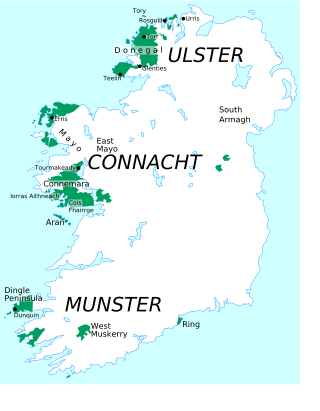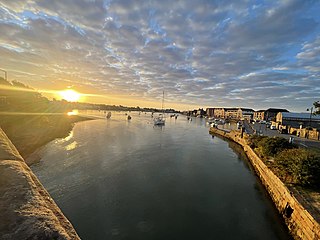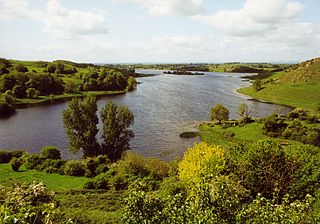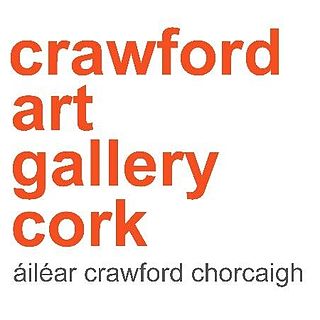
Dublin is the capital of the Republic of Ireland and also the largest city by size on the island of Ireland. On a bay at the mouth of the River Liffey, it is in the province of Leinster, bordered on the south by the Dublin Mountains, a part of the Wicklow Mountains range. At the 2022 census, the city council area had a population of 592,713, while Dublin City and its suburbs had a population of 1,263,219, and County Dublin had a population of 1,501,500.
William Michael Joseph Whelan is an Irish composer and musician. He is best known for composing a piece for the interval of the 1994 Eurovision Song Contest. The result, "Riverdance", was a seven-minute piece of original music accompanying a new take on traditional Irish stepdance that became a full-length stage production and spawned a worldwide craze for Irish traditional music and dance. The corresponding soundtrack album earned him a Grammy. "Riverdance" was released as a single in 1994, credited to "Bill Whelan and Anúna featuring the RTÉ Concert Orchestra". It reached number one in Ireland for 18 weeks and number nine in the UK. The album of the same title reached number 31 in the album charts in 1995.

Galway is a city in the county town of County Galway. It lies on the River Corrib between Lough Corrib and Galway Bay. It is the most populous settlement in the province of Connacht, the fifth most populous city on the island of Ireland and the fourth most populous in the Republic of Ireland, with a population at the 2022 census of 85,910.

A Gaeltacht is a district of Ireland, either individually or collectively, where the Irish government recognises that the Irish language is the predominant vernacular, or language of the home. The Gaeltacht districts were first officially recognised during the 1920s in the early years of the Irish Free State, following the Gaelic revival, as part of a government policy aimed at restoring the Irish language.

Dungarvan is a coastal town and harbour in County Waterford, on the south-east coast of Ireland. Prior to the merger of Waterford County Council with Waterford City Council in 2014, Dungarvan was the county town and administrative centre of County Waterford. Waterford City and County Council retains administrative offices in the town. The town's Irish name means "Garbhann's fort", referring to Saint Garbhann who founded a church there in the seventh century.

St Stephen's Green is a garden square and public park located in the city centre of Dublin, Ireland. The current landscape of the park was designed by William Sheppard. It was officially re-opened to the public on Tuesday, 27 July 1880 by Lord Ardilaun. The square is adjacent to one of Dublin's main shopping streets, Grafton Street, and to a shopping centre named after it, while on its surrounding streets are the offices of a number of public bodies as well as a stop on one of Dublin's Luas tram lines. It is often informally called Stephen's Green. At 22 acres (8.9 ha), it is the largest of the parks in Dublin's main Georgian garden squares. Others include nearby Merrion Square and Fitzwilliam Square.

An Clochán Liath, known in English as Dungloe, is a town on the west coast of County Donegal in Ulster, the northern province in Ireland. It is the main town in The Rosses and the largest in the Donegal Gaeltacht. Dungloe developed as a town in the middle of the 18th century, and now serves as the administrative and retail centre for the west of County Donegal, and in particular The Rosses, with the only mainland secondary school for the area.
Events from the year 2002 in Ireland.

Lough Gur is a lake in County Limerick, Ireland between the towns of Herbertstown and Bruff. The lake forms a horseshoe shape at the base of Knockadoon Hill and some rugged elevated countryside. It is one of Ireland's most important archaeological sites. Humans have lived near Lough Gur since about 3000 BC and there are numerous megalithic remains there.

Ráth Chairn is a small village and Gaeltacht in County Meath, Ireland. It is about 55 km northwest of Dublin. Ráth Chairn Gaeltacht was founded in 1935 when 27 families from Connemara, mostly from Ceantar na nOileán, were settled on land previously acquired by the Irish Land Commission, followed by a further 11 families in 1937. In all 443 people moved to the area.

Richmond Green is a recreation area near the centre of Richmond, a town of about 20,000 inhabitants situated in south-west London. Owned by the Crown Estate, it is leased to the London Borough of Richmond upon Thames. The Green, which has been described as "one of the most beautiful urban greens surviving anywhere in England", is roughly square in shape and its open grassland, framed with broadleaf trees, extends to roughly twelve acres. On the north-east side there is also a smaller open space called Little Green. Richmond Green and Little Green are overlooked by a mixture of period townhouses, historic buildings and municipal and commercial establishments including the Richmond Lending Library and Richmond Theatre.

Guinness Storehouse is a tourist attraction at St. James's Gate Brewery in Dublin, Ireland. Since opening in 2000, it has received over twenty million visitors.

The Crawford Art Gallery is a public art gallery and museum in the city of Cork, Ireland. Known informally as the Crawford, it was designated a 'National Cultural Institution' in 2006. It is "dedicated to the visual arts, both historic and contemporary", and welcomed 265,438 visitors in 2019. The gallery is named after William Horatio Crawford.

Tyrone House in County Galway is a ruined manor house, built in the 1770s on a promontory by the estuary of the Kilcolgan river, about 2 miles (3 km) from the village of Kilcolgan, County Galway, Ireland.
Trevor White is an Irish writer, publisher, food critic and museum director. Born in Dublin, he worked as an editor at Food & Wine and launched The Dubliner magazine in 2001. White published the magazine for eight years before selling it to another publisher in November 2008. In 2011 he created the civic initiative "City of a Thousand Welcomes" and the Little Museum of Dublin.

The 3Arena (originally The O2) is an indoor amphitheatre located at North Wall Quay in the Dublin Docklands in Dublin, Ireland. The venue opened as The O2 on 16 December 2008 and was re-branded on 4 September 2014 due to the takeover of O2 Ireland by Three Ireland. The venue is owned by a Live Nation subsidiary, Apollo Leisure Group Ltd. and is among the top ten busiest music arenas by ticket sales in the world.
Portlick Castle is a late medieval tower house castle near the village of Glasson, County Westmeath, Ireland. It is located approximately 6 miles from Athlone on the shores of Lough Ree. It comprises a square late medieval 4-storey stone tower with an attached 2-storey Georgian wing and Victorian tower.

Mairéad Dunlevy, was a museum curator and Irish costume expert.

The Museum of Literature Ireland, branded MoLI in an homage to Molly Bloom, is a literary museum in Dublin, Ireland. It opened in September 2019. The museum is a partnership between the National Library of Ireland and University College Dublin (UCD). It is located in UCD's Newman House in St Stephen's Green. It holds a permanent collection of James Joyce–related material, including his "Copy No. 1" of Ulysses, and revolving exhibitions on other Irish literary figures. With a range of audio and immersive displays, it has been nominated for and won a number of awards for design and architecture.























